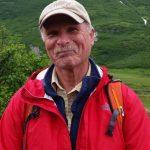-
Yellowstone National Park recently released its Final Bison Management Plan. It arbitrarily limits bison numbers through tribal hunting outside of the park and the transfer of public Yellowstone bison to Indian reservations. The NPS Preferred Alternative 2 is better than the existing bison management but will continue the degradation of wild bison. Alt. 3 is…
-
Winter weather frequently drives wild Yellowstone bison out of the park seeking forage, where they are captured or killed at the park border. Photo George Wuerthner Recently news media announced the transfer of 141 of Yellowstone’s bison to the Fort Peck Indian Reservation. Most of the media and many conservation groups hailed this as…
-
Yellowstone bison are part of the global wildlife heritage. Photo George Wuerthner A week ago, 116 bison captured in Yellowstone National Park were transferred to the Fort Peck Indian Reservation as part of the Bison Relocation Program. Since 2019, 414 Yellowstone bison have been transferred to the Assiniboine and Sioux Tribes at Fort Peck. Many…
-
Bison and Tetons, Grand Teton NP, Wyoming. Photo George Wuerthner In a recent New York Times commentary, author Dayton Duncan celebrated what he termed as the ongoing restoration of bison across the West. Hundreds of thousands of bison reside in the US on ranches, Indian reservations, and state and federal lands. That may sound like…
-
Tribal bison carnage near Yellowstone NP border last winter. Last week, 11 tribes gathered in Fort Hall, Idaho, to discuss “stewardship” of Yellowstone bison. Representative tribes included Shoshone, Ute, Crow, Arapahoe, Northern Cheyenne, Cree, Nez Perce, and Lakota/Dakota. According to the Buffalo Field Campaign announcement, the tribes all supported the “sacredness” of Yellowstone’s bison and…
-
Wildness in bison is maintained by evolutionary agents like harsh weather, native predators, competition for forage and mating. Photo George Wuerthner Many bison advocates assert that bison have been “saved” from extinction because approximately half a million animals are now found in zoos, ranches, tribal reservations, state parks, national parks, and other public lands. Bison…
-
Yellowstone National Park has produced an DEIS on bison management. The Park Service is accepting comments until October 10th. You can read the DEIS and make your own comment here: Attached are the detailed comments of the Wild Bison Restoration Council, however, if you want to make your own comments here are some brief points.…
-
Harsh winter weather forces bison to seek forage outside of Yellowstone National Park where tribal people slaughter them. Photo George Wuerthner https://helenair.com/outdoors/buffalo-field-campaign-yellowstone-national-park-bison/article_613ca670-2fbf-501c-b7a4-987bcff200ac.html#tracking-source=home-top-story A press release from the Buffalo Field Campaign described a proposal for the tribes to develop a plan to assume “primary jurisdiction” over Yellowstone National Park’s bison. The first question anyone should…

George Wuerthner is an ecologist and writer who has published 38 books on various topics related to environmental and natural history. He has visited over 400 designated wilderness areas and over 200 national park units.
